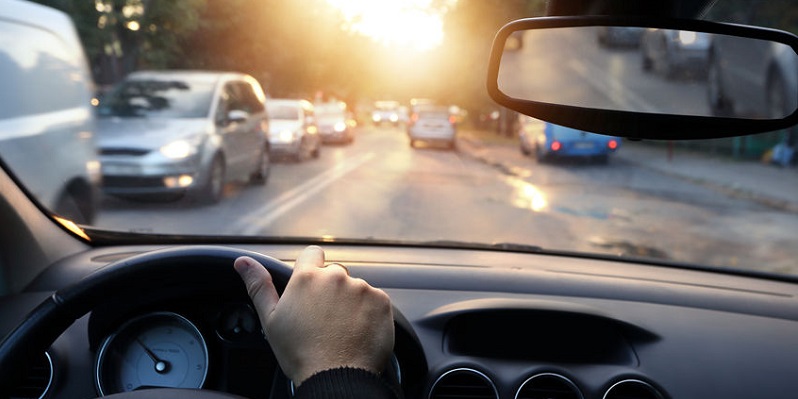Pedestrian accidents are three times more likely to happen during the evening rush hour during the weeks after daylight saving time ends.
Annual Time Shift Yields Darkness, Drowsy Drivers
Go ahead, stay in bed an extra hour on Nov. 5. You deserve it. But be prepared: The end of daylight saving time brings with it some danger, especially on the road.
Temperatures are dropping, the foliage is changing color, and it’s getting darker, sooner — suddenly so this Sunday. Your drive to work could be in total darkness and the drive home? Probably more of the same.
Daylight saving time ends officially at 2 a.m., when you should turn your clocks back one hour. The clocks jump forward an hour again, and sunny mornings and late afternoons return when daylight saving time returns in early March.
Researchers see significant increases in auto accident fatalities during both of our twice-annual clock adjustments, which disrupt motorists’ sleeping and waking cycles. In addition, the fall change is associated with the arrival of wintry weather and more hours of darkness, which reduces drivers’ ability to see road hazards, including animals, who don’t even set their alarm clocks. Look out.
A study of drivers in British Columbia shows a general increase in the number of car accidents during late afternoon commuting from the two weeks before the change to the two weeks after, according to InsuranceHotline.com, a Canadian Insurance Industry news service. Dr. John Vavrik, a psychologist affiliated with the insurance industry there, said people often reason that the extra hour in bed will make drivers more alert and allow them to stay awake longer, but they will end up being less alert and feeling more tired. It’s because time changes can affect the quality of your sleep and warp your internal clock.
Number of Pedestrian Accidents Rises
It’s vital for drivers — and pedestrians — to pay more attention after the clocks fall back.
People walking across the street or in parking lots are three times more likely to be killed by vehicles during evening rush hours for weeks after the annual fall time shift, according to researchers from Carnegie Mellon University, the Pittsburgh Post-Gazette reported in 2007. The researchers suspected that during the more than seven months of daylight saving time, pedestrians and drivers get used to better visibility during evening hours and are slow to adapt to the dangers of the dark. The biggest risks for walkers are from 5 p.m. to 7 p.m.
The researchers studied six years of traffic incidents across the United States and found that there are an average of 37 more pedestrian accident fatalities in November around 6 p.m. than there are during the same hours in October — a 186 percent increase. They found no significant differential in the death rates of drivers and passengers in vehicles during those hours. Likewise, there’s no real change found for any group traveling at noon. Things begin to level off by December, they found.
Time Change Bodes Carnage for Wildlife
Drivers tend to see — or miss — more deer in their headlights after the change, The Alamosa Valley Courier reminded its readers. The newspaper urged drivers to slow down because high speeds increase accidents’ severity, such as when drivers swerve to avoid a large animal in the road. Moderate speeds give drivers more time to react and avoid an auto accident involving Colorado wildlife. Drivers should also stay alert from evening to dawn, when wildlife are most active and likely to be on roadways.
Colorado Parks and Wildlife area wildlife manager Crystal Chick told the newspaper:
“The fall time change happens to be right in line with peak mating season for some of our wildlife, especially deer. Bears are also still actively looking for food and the calories needed before hibernation. Animals are on the move this time of year, most actively between dawn and dusk. With shorter daylight hours, that makes wildlife harder to see right when people are making their daily commutes.”
Tips for Coping While ‘Falling Back’ to Standard Time
Follow these tips from Canada’s CBC News to reduce accidents after the clocks change:
- Go to bed at your normal time and take the advantage of sleeping that extra hour.
- Clean your headlights, brake lights, and turning signals before even pulling out of the driveway.
- Give yourself extra time to get where you’re going.
- Use extra caution when nearing crosswalks, intersections, and bus stops to look for pedestrians and bicyclists in the reduced light.
- Obey speed limits and drive more slowly in bad weather.
- Don’t tailgate. Keeping a safe distance will help you react to any dangerous situations.
- Prepare your vehicle for colder weather.

